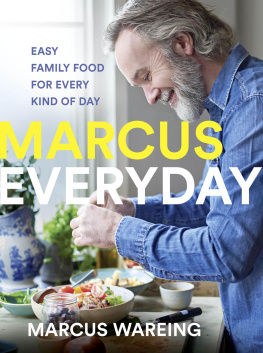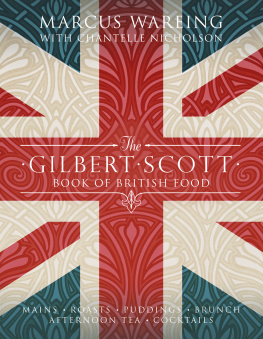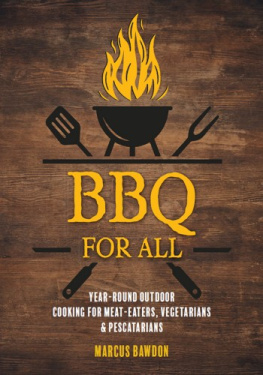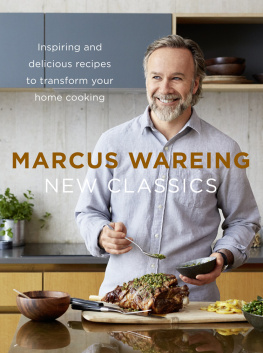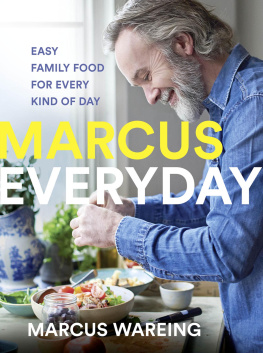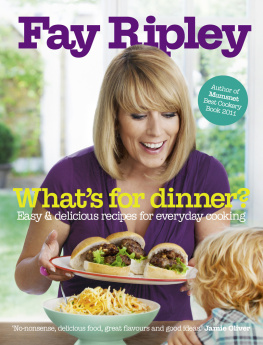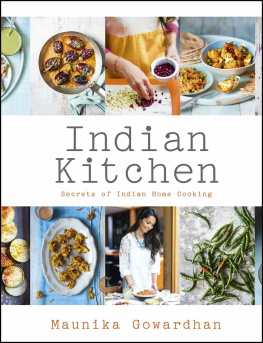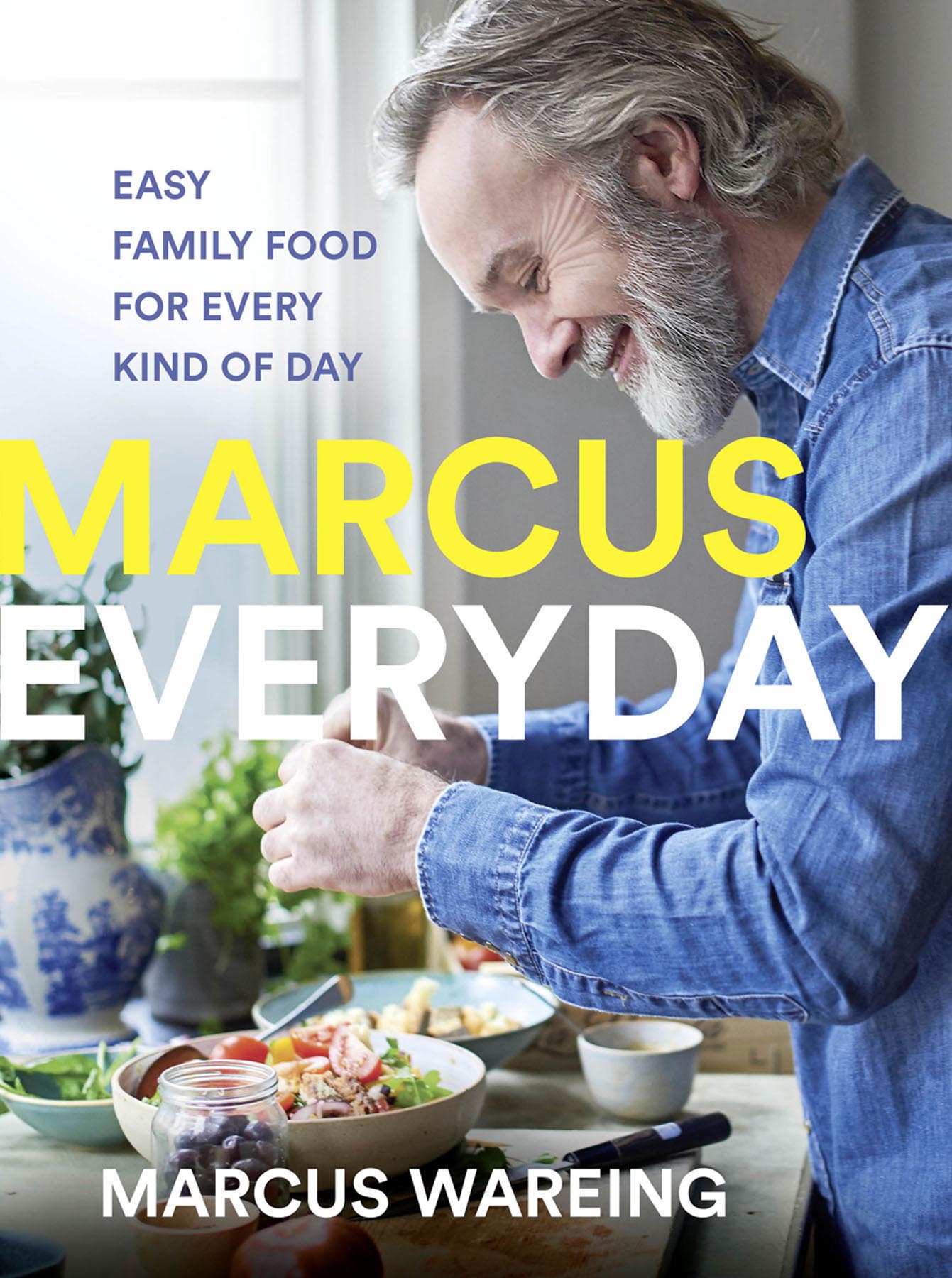HarperCollinsPublishers
1 London Bridge Street
London SE1 9GF
www.harpercollins.co.uk
First published by HarperCollinsPublishers 2019
FIRST EDITION
HarperCollinsPublishers Ltd 2019
Jacket design by James Empringham HarperCollinsPublishers Ltd 2019
Cover photographs Susan Bell 2019
A catalogue record of this book is available from the British Library
Marcus Wareing asserts the moral right to be identified as the author of this work
Photography: Susan Bell
Food styling: Becks Wilkinson
Prop styling: Tabitha Hawkins
Find out about HarperCollins and the environment at www.harpercollins.co.uk/green
Source ISBN: 9780008320997
Ebook Edition October 2019 ISBN: 9780008321000
Version 2019-10-04
Contents
Everyday cookery should be just that: something that is achievable on a daily basis and fits in with the busy lives we all lead. This book of recipes for great home cookery will enable anyone to create something delicious and exciting for the whole family, for every occasion.
Each chapter has earned its place in this book and came to mind when I started thinking about how I live my life and how I view food when Im not being a chef and am in my kitchen at home. Its about my life outside my work, but the inspiration still comes from being a chef the two are intertwined. This book is divided into eight chapters, which, from my perspective, cover all the different demands and challenges of everyday cookery and provide a resource for absolutely anyone to create something wonderful in their kitchen. I wanted to explore everything from easy weeknight dinners to ideas for what to eat on holidays, and anything in between.
Home cookery is, and always will be, a way of creating many positive connections through food; from knowing what is in the food on your plate, to minimising what you waste and to the sense of enjoyment gained by knowing that youve created something delicious with your own hands.
In the autumn of 2017 I acquired a property in East Sussex called Melfort House, which has given us an opportunity to spend quality time together as a family all year round, away from the hustle and bustle of London. One of the big pluses for me was the farm and arable land that came with the house: there was an overgrown and unused kitchen garden, a small orchard, some beehives and huge potential for more in terms of what they could produce.
For me, 2018 was a year of discovery. What would grow? Where, and how? What would the yield be? After a huge clearout and clean up, small green shoots were celebrated with a sense of anticipation of what they would grow into. Even though Ive been a chef for more than 30 years, this has been the one part of the process I hadnt yet experienced; the growing and harvesting of the produce.
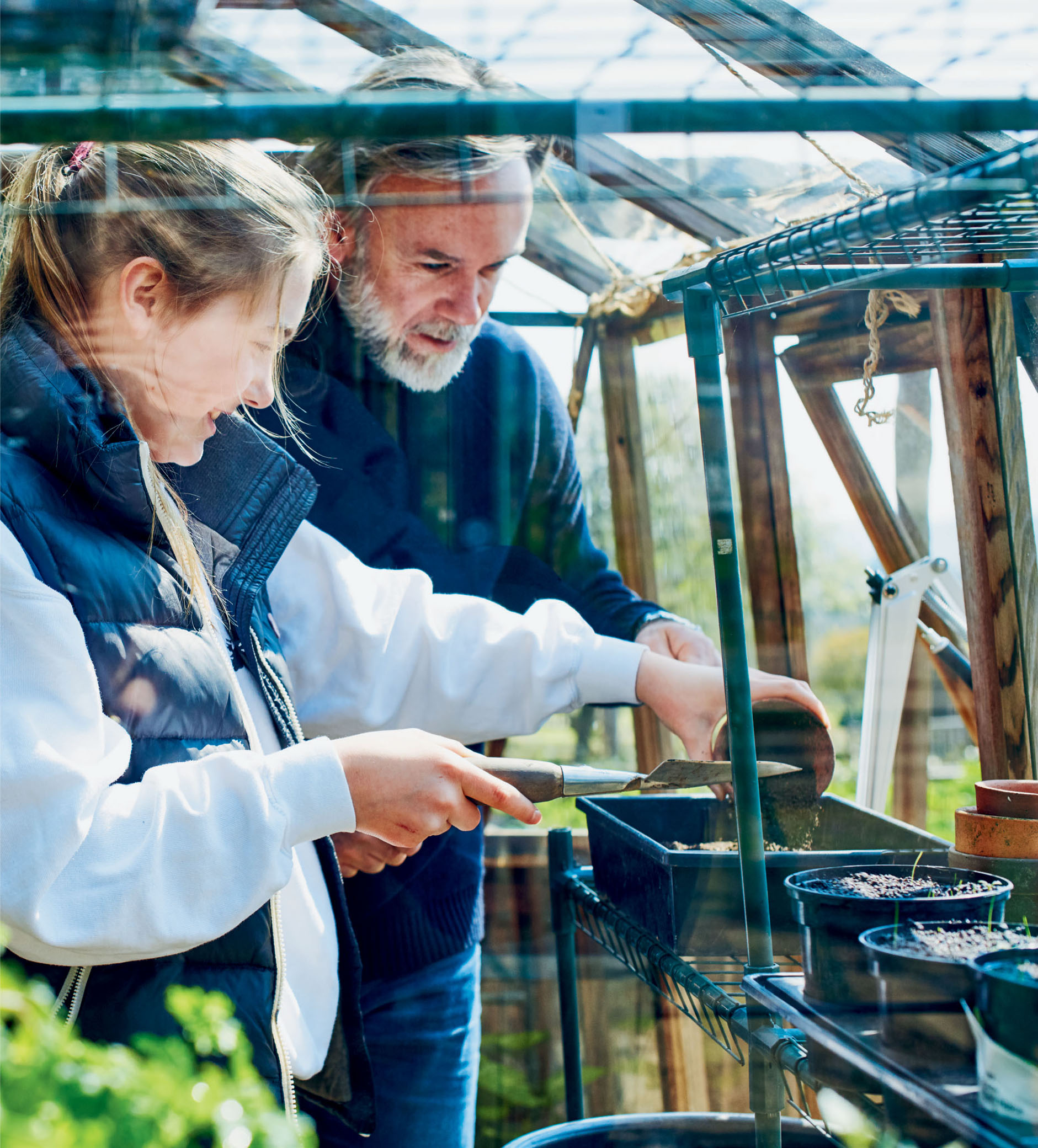
I feel like a child again when Im there, and the kitchen garden, the bees, the orchard, the apples, the pears they all inspire me as a chef. We transported numerous boxes of freshly harvested fruit and vegetables, as well as honey from the beehives, in the back of the car into central London, to the chefs in my kitchens. Their excitement was a joy to see. The logistical challenge of growing, harvesting and then getting produce from Sussex to London was a little trial and error, and we learned a lot in the first year. Im currently creating a pond at the back of the house, around which were growing herbs and wild flowers to use in the restaurant. But I have even bigger plans, so watch this space!
I have therefore dedicated a whole chapter to celebrating my first year at Melfort My Garden Patch. While you may not have your own garden patch, you can source some great produce from farmers markets, community gardens, and even your local supermarket. Or sign up for online vegetable boxes. We sometimes forget to celebrate the humble vegetable, instead spending time sourcing and investing in a great joint of beef or other meat. I implore you to put the same effort into sourcing good-quality garden produce and use this chapter to inspire you. My kids now know the difference in taste between tomatoes grown under the sun, harvested within their rightful season, and the tomatoes from the supermarket theyre chalk and cheese! But what Ive also taught them is how to take those everyday tomatoes we all buy and improve their flavour if we need to.
What you will also see scattered throughout the book is a focus on honey as a fantastic ingredient, used in many different ways. Having comb honey from our own bees at Melfort has made me think about this ingredient in a completely different way and about the flowers (in particular the lavender and roses) they pollinate all of which flavour our honey. This ingredient that I have always taken for granted as a cook suddenly has magical implications now that Ive witnessed its making.
Running a restaurant kitchen from a young age instilled in me an awareness of waste and resourcefulness; of not wanting to needlessly discard a single thing. The cost of food, how you prepare it and how you eventually sell it, can make or break a restaurant business. The notion of throwing something in the bin that could still be used is sacrilege to me. So, for me, this principle should also be applied at home. After Marcus at Home and New Classics I wanted to write a book that celebrated home cookery and seasonal produce, which would also be a practical guide to creating delicious meals from ingredients that may not have been completely used up, or might otherwise typically be destined for the bin.
We are bombarded with a constant stream of news about environmental issues. The sheer amount of food that we, as a nation, waste on a daily basis is a huge problem. Food gets stacked up in the fridge, then we overbuy throwing things into our shopping baskets because we think we need it, without necessarily looking in the fridge before we go shopping and planning what were buying for. Its so easy to buy more than we need, be seduced by 2-for-1 deals and so on. We need to start buying only what were actually going to eat. Things go off, of course, but having been taught as a young man by my father to appreciate fresh produce, I know how not to take an ingredient for granted as well as how to use it up resourcefully.
The chapter Waste Not, Want Not came about originally because of the sheer volume of some of the Melfort produce (tomatoes, for example) that I could not keep up with, and the recipes that I used to avoid throwing anything away. This chapter provides a framework for how to use what you may have a glut of, but also how to breathe new life into that old potato lying at the bottom of your pantry, or that slightly shrivelled orange in your fruit bowl.
I also felt there was a need for a chapter on cooking solo Home Alone. Instead of having a cheese sandwich, or ordering a takeout, try these recipes to give yourself a bit of a treat (my favourite is the ), and enjoy the silence.
Ive included handy methods and tips throughout the book for how to cook ingredients the way that I, as a chef, cook them. Its intuitive for me, but I have realised when cooking at home with my family and friends that there are certain techniques and procedures that transform a dish from being just okay to being great, such as how to cook a steak, how to make perfect mashed potato, and my foolproof method for cooking omelettes. As well as what to do when things dont quite go to plan

